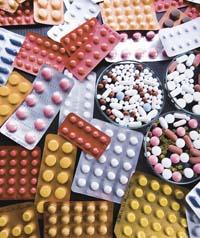Medicalization: avoiding or causing the disease?
2010/02/01 Mariñelarena, Eulali - Familia-medikua | Balagué, Laura - Erizaina | Idarreta, Ina - Familia-medikua Iturria: Elhuyar aldizkaria

The definition of the disease is slippery and changing depending on socio-cultural aspects and economic and scientific development. At present, health, more than a right, is considered as a consumption capacity.
In 2002, the British Medical Journal, based on the results of a vote among readers, published "the first twenty of the list of non-diseases", among the reasons for the most common medical consultations; and, among others, boredom, tenderness and baldness appeared as diseases.
R. R. Moynihan, in the Disease Mongering section of Plos Medicine, made the relationship between medication and disease inventions through five sections:
· Turn the natural events of life into medical problems (pregnancy, menopause, death...)
· Convert personal or social problems into medical problems (link shame with social phobia, for example)
· Overimportance to the frequency of symptoms (erectile weakness, andropause...)
· Overimportance of mild symptoms (irritating bowel...)
· Converting risk into disease.
This last takes on special importance when explaining the medicalization. The risk, i.e., the mere statistical relationship between a risk factor and the disease, is considered a pre-existing disease. As a result, preventive actions directed at the healthy population have been significantly expanded and the slogan "in case it is better to prevent" has been rooted in society. To understand diseases in such a broad way means to catch more and more healthy people in the armament framework of diagnosis, which increases interventions.
Proof of this is the treatment with menopausal hormones and drugs commonly used to prevent osteoporosis or reduce cholesterol, as well as the use of excessive tests in the diagnostic and observation processes. As an example of this, performing the PSA test, for example, although it has not been shown to reduce prostate cancer mortality.
This intervention, in addition to the three levels of prevention already known, has generated the concept of prevention in fourth level, in order to protect users from the adverse effects that the health system itself produces.
Protagonists protagonists Protagonists of the Festival
The medicalization has many protagonists. A pharmaceutical industry. One of the main objectives of this industry is to obtain the greatest possible benefits, and taking into account that the number of patients who have the possibility of paying drugs in the world is relatively small, marketing is aimed at those who are healthy, making them feel that they need attention. As a result, the prevention drug market is growing. To achieve this goal, the industry involves opinion leaders (scientific societies, patient associations, media), theoretically “in exchange for nothing”.
Governments and health policies also have a lot to say. The health administration has as its mission to detect the therapeutic needs of patients, define their policies and lead them, but it is often presented to us as a system that depends on the defense of the interests of technological innovations or pressure groups, and sometimes tends to accept interventions that have not shown a clear balance between damages and benefits.
As for the media, it is evident that the health news is sold perfectly. However, they tend to increase symptoms and actions to make them more eye-catching, strengthening the promotion of healthy basic measures.
Health professionals, of course, are a fundamental pillar, an undisputed objective of the industry. Medical agents, conscious or unconscious, as well as victims. Largely responsible for the innovation and intensification of interventions.
Finally, we cannot forget customers or users. We are facing a new user profile with a lot of information, with its advantages and risks. The information the user receives is not neutral and is the ideal forum for pressure groups to incorporate their products. This culture of current consumption listens with naturalness, sometimes and with joy or with desire, many of the messages spread by the pharmaceutical industry, convinced that the solution is medicines for almost all processes.
Finally, we could say that we do not seem to go the right way, so we should reflect on whether this model is socially or economically sustainable. All agents have some responsibility. The Administration should address a policy that encourages autonomy, decision-making capacity and the assumption of a minimum risk, eliminating or reducing medicalization issues. The media can also work positively in health education, spreading self-care measures and messages in favor of the good use of services. Professionals, as indicated by the doctor Gervas, should offer the highest quality, with minimal intervention and as close as possible to patients. In this task, it may be helpful to use an evidence-based method and practice medicine taking into account the patient's participation. As for users, they should recover the responsibility of the health/illness binomial, learn to accept uncertainty and recognize that medicine and technology are not able to solve all problems.
Phrase of Skraben for the last reflection:
"Life itself is a murderous disease. It is sexually infected, one must learn to use and exploit it in an integral way, and for this it is necessary to know with common sense when measuring and selecting among the most sustainable and unsustainable risks".

Gai honi buruzko eduki gehiago
Elhuyarrek garatutako teknologia




